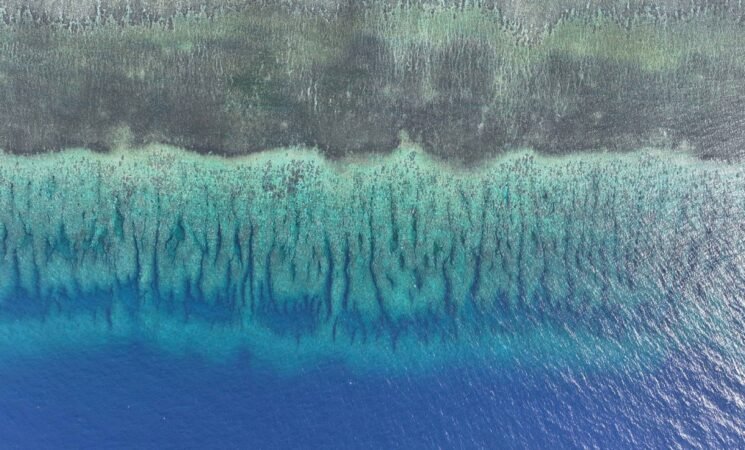10 September 2025, NIICE Commentary 11683
Dr Chander Shekhar
The South China Sea is one of the most sensitive maritime zones and a source of territorial conflict that involves several Southeast Asian countries and China, claiming maritime features, and is dependent on it as a transportation route for international commerce. This is ensured through the freedom of navigation, which all countries believe in and push for global good. Along with that, it is also home to marine diversity that needs to be protected through an organized and institutionalized way with regional cooperation. On 10 September, China’s State Council approved a national nature reserve at the Huangyan Dao, also known as Scarborough Shoal. Now, it will be China’s 450th national nature reserve as per the National Bureau of Statistics. The reserve has invited responses from different stakeholders, given its contested nature ,and would shape regional geopolitics in the South China Sea.
Marine Diversity
South China Sea is a biologically diverse and rich marine environment, and home to one-third of the world’s marine biodiversity, including coral reefs, mangrove forests, and extensive seagrass beds. Analyst at the China’s Ministry of Natural Resources Institute of Marine Development Strategy believes that the “Huangyan Dao and its surrounding waters feature as a typical coral reef ecosystem, rich fisheries resources, and rare marine species. It is a representative natural ecosystem region and a natural concentration area of rare and endangered wild species”.
Geographically, the Shoal is located 200 kilometres off the Philippines and is covered by fish stocks, and this strategic location carries more than USD 4.5 trillion of trade and business. The Scarborough Shoal is claimed by China under its nine-dash line. So, location is relevant strategically, geopolitically, economically, and environmentally.
China’s Initiative
The State Council, an executive branch and the supreme administrative unit of the People’s Republic of China, has given its approval to establish the Huangyan Dao national nature reserve. According to the proposal of the State Council, the idea to establish a reserve “is an important guarantee for maintaining the diversity, stability and sustainability of Huangyan Dao’s ecosystem”. Under this plan, it was agreed “to improve management institutions, strengthen supervision and law enforcement against all types of illegal and irregular activities within the nature reserve, to ensure the implementation of all management measures”. This initiative is at its early stage of development, many things are yet to be shared by China about how things would be carried out. It was noted down that the future road map of Huangyan Dao national reserve would be shared by country’s Forestry and Grassland Administration unit
To give it more shape and suggest its geopolitical significance in South China Sea, the Global Times newspaper underlines that the marine reserve is being built in line with national laws and international practice, and further in the future prior-approval would be needed while entering the reserve. China’s authority claims that “any unlawful acts that damage the ecological environment in Huangyan Dao and its surrounding waters will be subject to legal accountability”. Furthermore, as per the regulations of China concerned with nature reserves, “activities such as logging, grazing, hunting, fishing, collecting medicinal herbs, land reclamation, slash and burn, mining, quarrying, and sand excavation are prohibited within a reserve”. Scholar states that the Huangyan Dao has been a traditional Chinese fishing ground rich in reefs and diverse fish species, within the reserve such activities will be banned except permitted by law.
Responses
China’s construction of a nature reserve in the South China Sea has varied responses. It is noted that this Chinese move is less about the protection of the environment and more about strengthening its control over maritime features. Provided the contested nature of territories in the South China Sea, the response of China’s construction of a marine reserve was early anticipated. On 14 September, Japan, the Philippines, and the United States will carry out exercises in the South China Sea by deploying their vessels and aircrafts.
This engagement underlines their joint commitment “to enhance maritime cooperation, promoting regional security and supporting rules based international order” in the region, China also warned “to cease provocation in South China Sea”. Also, the United States has condemned China’s South China Sea nature reserve strategic move. The Secretary of State, Marco Rubio, says the US “stands with the Philippines and rejects China’s destabilizing plans for a disputed atoll in the South China Sea”.
China states that the reserve would preserve a 3,524-hectare coral reef ecosystem. However, Manila in the past had accused China of damaging marine life and coral reefs. There has been a perennial mutual accusation blame game from both sites to rationalize their position and achieve national interest goals. The National Security Advisor of the Philippines said the PRC’s plan is “patently illegal” and demonstrates its intention of occupation, whereas China says this Shoal is its “inherent territory”. Although the 2016 Permanent Court of Arbitration verdict did not change the geopolitics of the South China Sea, given its judgment in favour of Manila, which China nullified.
Conclusion
The National Nature Reserve construction over a disputed feature, as part of the South China Sea, is the latest development in China’s South China Sea policy. Building of a reserve is not a new element; in the past Chinese have built 449 National reserves. But, this time in the contested feature of Scarborough Shoal claimed by the Mainland China and the Philippines. Manila has responded by criticizing the move and carrying out military exercises with the US and Japan to showcase the joint commitment to maintaining a free and open Indo-Pacific region. To manage and preserve biological diversity, efforts are needed through mutual cooperation. Weaponizing the environment has evolved new domain of interest to shape geopolitics and strengthen claims and territory.
Dr Chander Shekhar is a Researcher at the Centre for International Politics, Organizations and Disarmament (CIPOD), Jawaharlal Nehru University, New Delhi, India.
The views expressed are the author's personal views.

